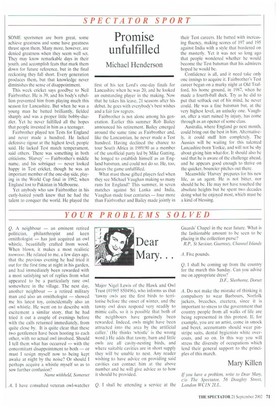Q. A neighbour — an eminent retired politician, philanthropist and
keen ornithologist — has just acquired an owl whistle, beautifully crafted from wood. When blown, it makes a most realistic toow000. He related to me, a few days ago, that the previous evening he had tried it out for the first time at night in his garden, and had immediately been rewarded with a most satisfying set of replies from what appeared to be a particularly rare owl somewhere in the village. The next day, another neighbour — a retired military man and also an ornithologist — showed me his latest toy, coincidentally also an owl whistle. He went on to describe with excitement a similar story, that he had tried it out a couple of evenings before with the calls returned immediately, from quite close by. It is quite clear that these two gentlemen have been hooting to each other, with no actual owl involved. Should I tell them what has occurred — with the concomitant disappointment to both — or must I resign myself now to being kept awake at night by the noise? Or should I perhaps acquire a whistle myself so as to sow further confusion?
Name withheld, Somerset
A. I have consulted veteran owl-watcher
Major Nigel Lewis of the Hawk and Owl Trust (01985 850496), who informs us that 'tawny owls are the first birds to territorise before the onset of winter, and the tawny owl does respond very readily to mimic calls, so it is possible that both of the neighbours have genuinely been rewarded. Indeed, owls might have been attracted into the area by the artificial caller.' (He thinks 'whistle' is the wrong word.) He adds that tawny, barn and little owls are all cavity-nesting birds, and where suitable cavities are in short supply they will be unable to nest. Any reader wishing to have advice on providing said cavities can contact him at the above number and he will give advice as to how it should be provided.










































































 Previous page
Previous page